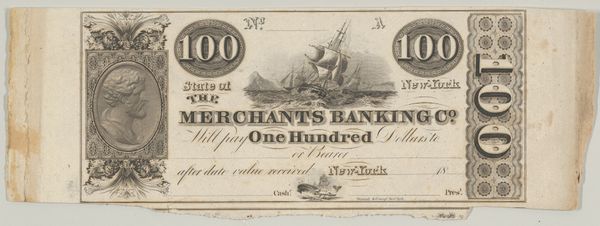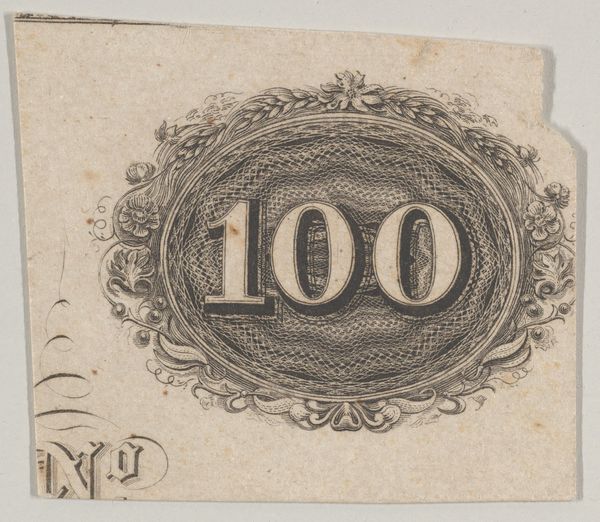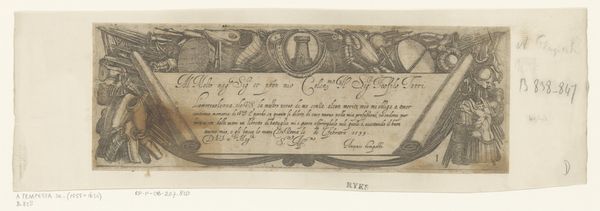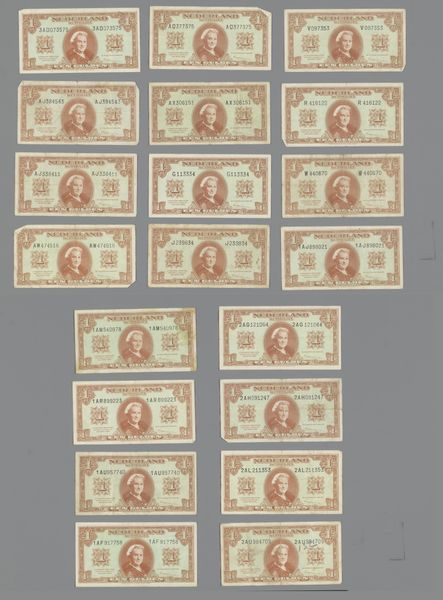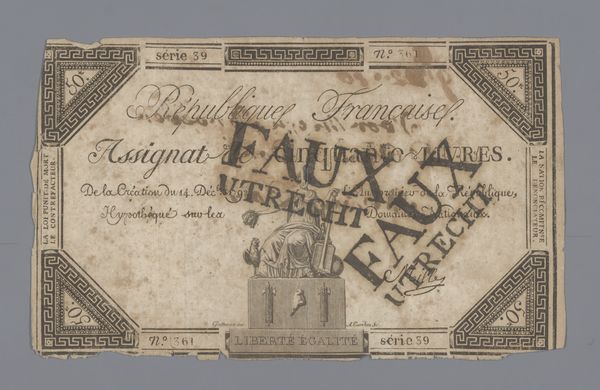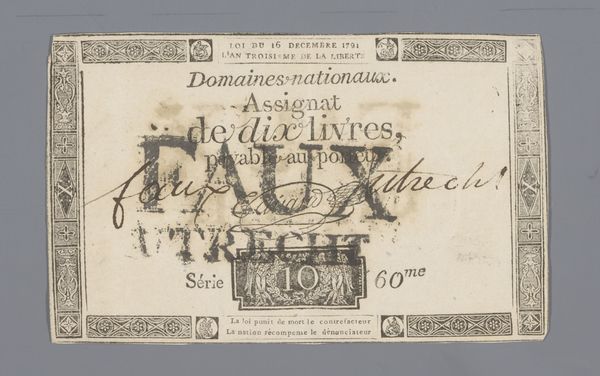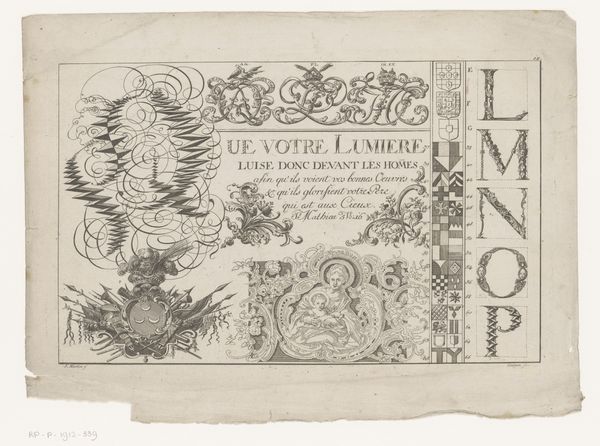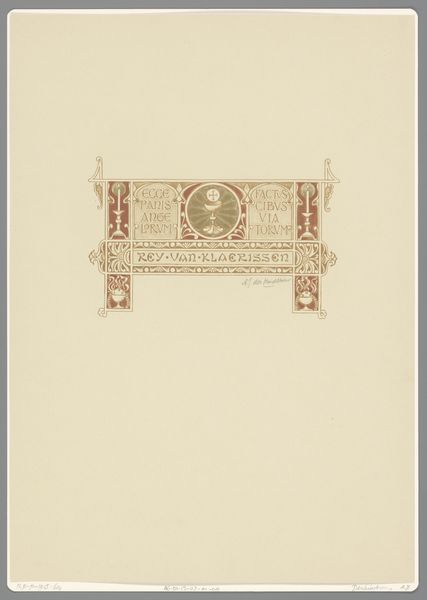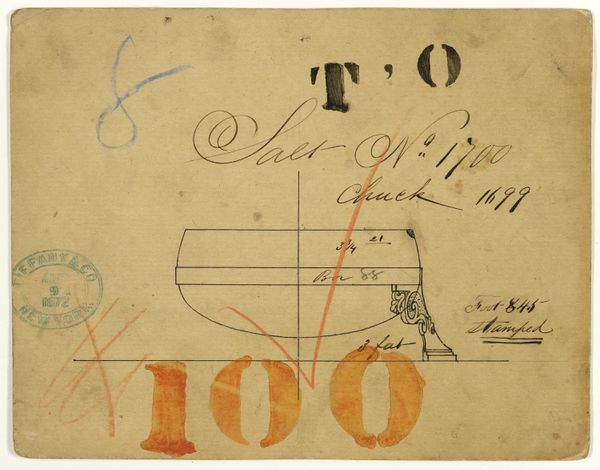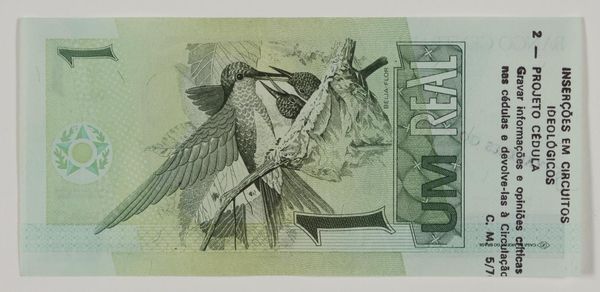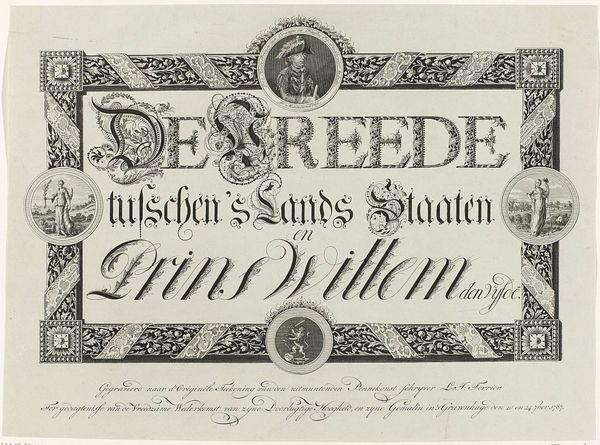
$1000 Bill for The Greenwich Bank, The City of New York 1823 - 1833
0:00
0:00
drawing, print, engraving
#
portrait
#
drawing
#
narrative-art
# print
#
pen illustration
#
cityscape
#
history-painting
#
academic-art
#
engraving
Dimensions: sheet: 2 15/16 x 7 1/16 in. (7.5 x 18 cm)
Copyright: Public Domain
Editor: This is a print of a $1000 bill for The Greenwich Bank from the early 19th century, created by Asher Brown Durand. It's intriguing to see such detailed engraving on something so functional. The portraits of Washington and Franklin feel very formal. What can you tell me about its overall design? Curator: The composition demonstrates a rigorous adherence to symmetry and balance. Notice how the portraits on either side mirror each other in terms of placement and framing, anchoring the design. The central allegorical figure acts as a visual keystone. Consider the precision of line and form throughout; the very texture of the engraving creates an illusion of depth. Editor: The allegorical figure is interesting, with the ship and the odd wheeled machine next to her. What's their purpose within the banknote's design? Curator: Indeed. The female figure likely represents Commerce or Liberty. Consider her placement: elevated, central, idealized. Her surroundings are similarly deliberate, with elements referencing New York's maritime trade. But why, in particular, this configuration? Examine the relationship of each element—the ship, the machine, the figure itself. Editor: So you're saying each component is carefully chosen, interacting to create a narrative and feeling, rather than just being decorative. I see how a close visual analysis opens it up to deeper layers. Curator: Precisely. It's a carefully constructed visual system, in which even the smallest element contributes to the whole. Approaching it in this way offers insights beyond its apparent functionality. Editor: Thanks! Looking at how each individual form contributes to a wider sense of stability really changes my perspective on this piece. Curator: And noticing that structure enables one to consider how it operated both functionally and ideologically. A new appreciation for the object emerges.
Comments
No comments
Be the first to comment and join the conversation on the ultimate creative platform.

